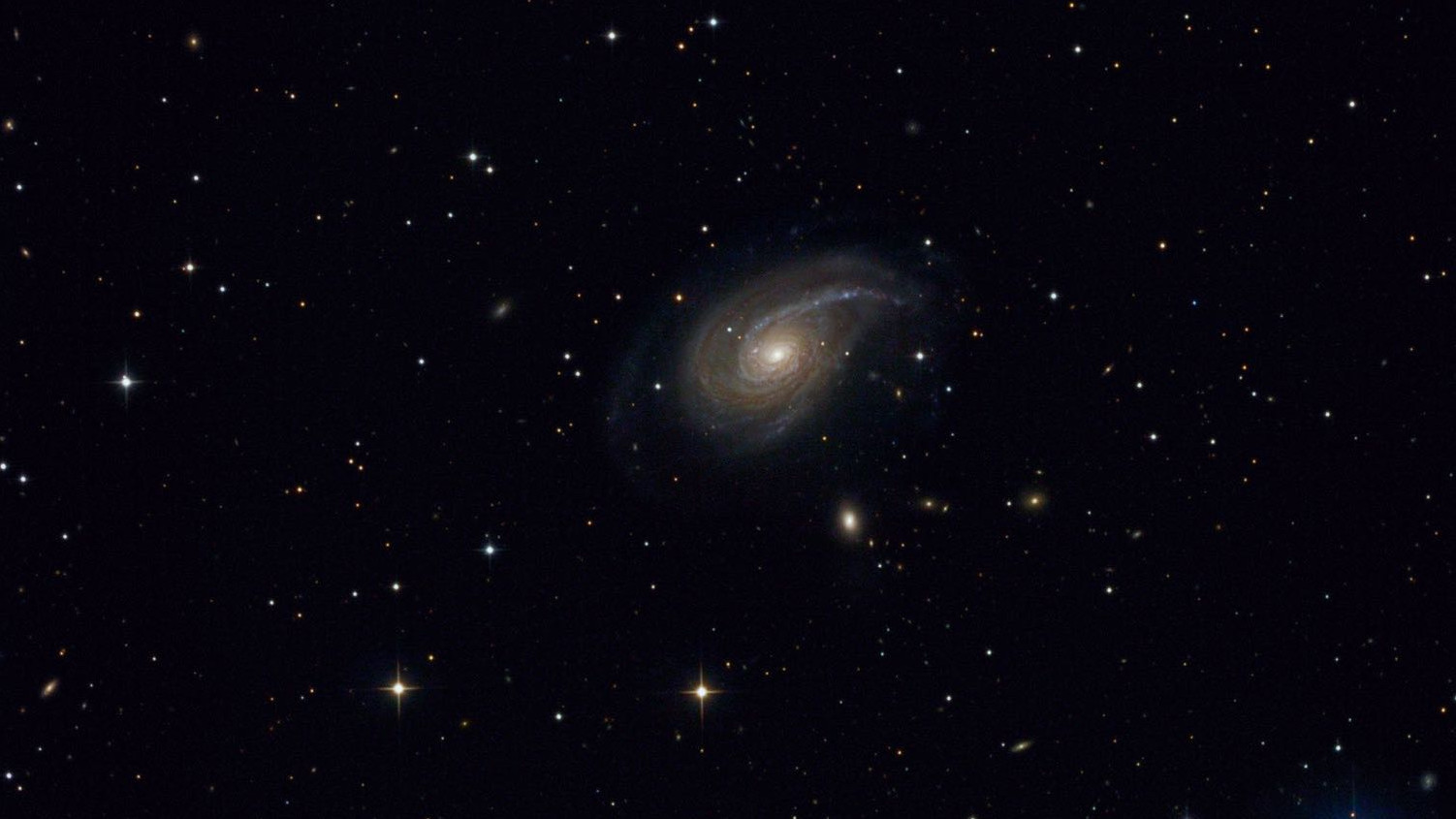The spiral galaxy NGC 772
Twice the size of our Milky Way and with an interacting companion, this spiral in Aries invites you to explore it with your telescope.
 The galaxies NGC 772 and NGC 770 in the constellation of Aries. Michael Breite,
Stefan Heutz and Wolfgang Ries
The galaxies NGC 772 and NGC 770 in the constellation of Aries. Michael Breite,
Stefan Heutz and Wolfgang RiesThe small constellation Aries can be found to the west of the striking constellation Pegasus (the Great Square in the autumn sky). The 6° separated brighter stars α (Hamal), β (Sheratan) form a curved line together with the fainter binary star γ (Mesarthim). Between 2000 BC and 100 BC, Hamal marked the point of the spring equinox. This so-called First Point of Aries has meanwhile moved into the constellation of Pisces due to the precession of the earth-axis. Aries is also one of the twelve constellations of the ancient zodiac, which is regularly visited by objects from the solar system due to its closeness to the ecliptic. The constellation does not contain any Messier objects, but it is home to a small number of interesting deep sky objects. One of these is the spiral galaxy NGC 772.
Apostrophe shape
 Drawing of NGC 772 and NGC 770 from
a 20 inch Newtonian at a magnification of 434×. Uwe Glahn
Drawing of NGC 772 and NGC 770 from
a 20 inch Newtonian at a magnification of 434×. Uwe GlahnNGC 772 was discovered on 29 November 1785 by the German-British astronomer Friedrich Wilhelm Herschel. It is around 115 million light-years away and has an apparent magnitude of 10.3. It is around 240,000 light years across and appears with an apparent size of around 7.4'×4.9' in the night sky. This makes this galaxy almost twice the size of our Milky Way.
The basic shape of the galaxy is oval. However, it contains a dominant spiral arm with bright stellar nurseries, and is deformed due to interactions with the bright accompanying galaxy NGC 770 which gives it its apostrophe-shaped appearance. NGC 770 was discovered on 3 November 1855 by Lord Rosse’s assistant R. J. Mitchell using the telescope known as the Leviathan of Parsonstown, and is 3.5' or 108,000 light-years away from NGC 772. Both galaxies are listed together in the Atlas of Peculiar Galaxies with the number Arp 78.
Dominant spiral arm
To find NGC 772, it is best to start from the star γ Ari, which is only about 2.8° east of the galaxy. Since the brightness of NGC 772 is roughly comparable with the faintest Messier galaxies (M91/M98), it is not a simple observation object for small binoculars. A telescope with an aperture of at least 10 cm is better. Here, the galaxy can already be seen as an oval-shaped nebulous spot with an asymmetric (irregular) shape. A telescope with an aperture of 20cm or more and 120x magnification will reveal the asymmetrical galaxy centre. The centre is small, bright and almost stellar in appearance.
The dominant spiral arm can be seen on the north-west side of the halo, and with indirect vision, the accompanying galaxy NGC 770 lying to the south can be just about made out. The spiral arm can be disaggregated into its individual fragments in an even larger telescope with an aperture of 40 cm or more.
 Finding chart of NGC 772 in the constellation of Aries. J. Scholten
Finding chart of NGC 772 in the constellation of Aries. J. ScholtenAuthor: Michael Feiler / Licence: Oculum-Verlag GmbH
